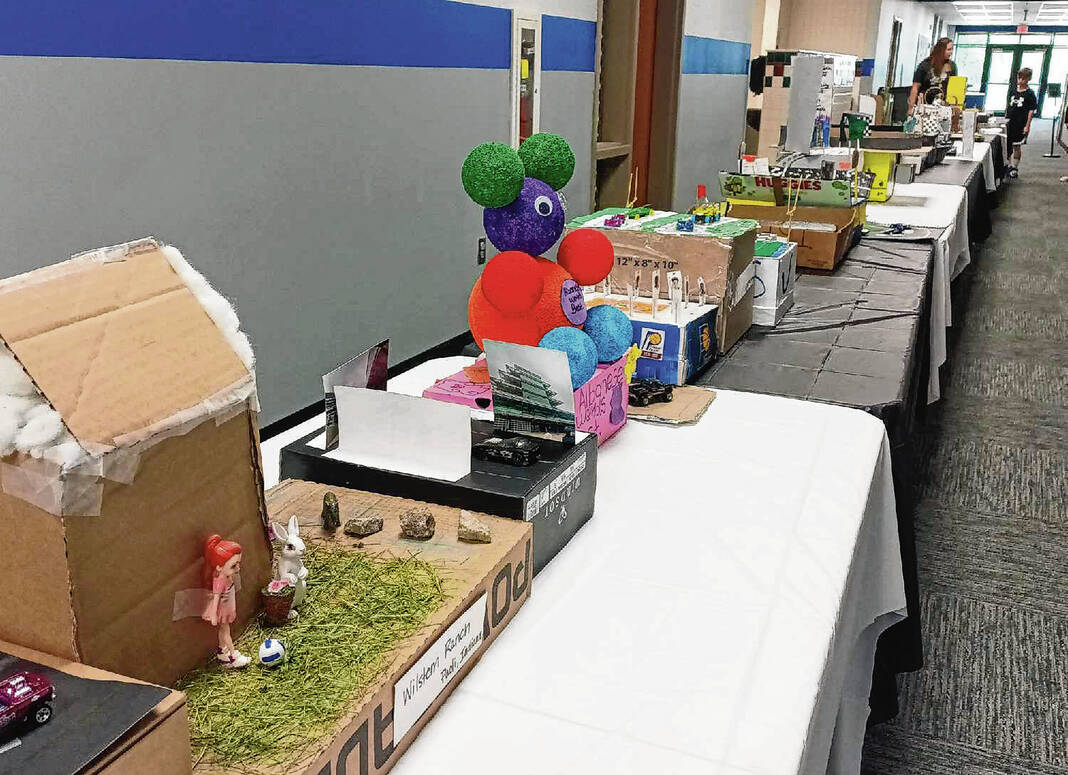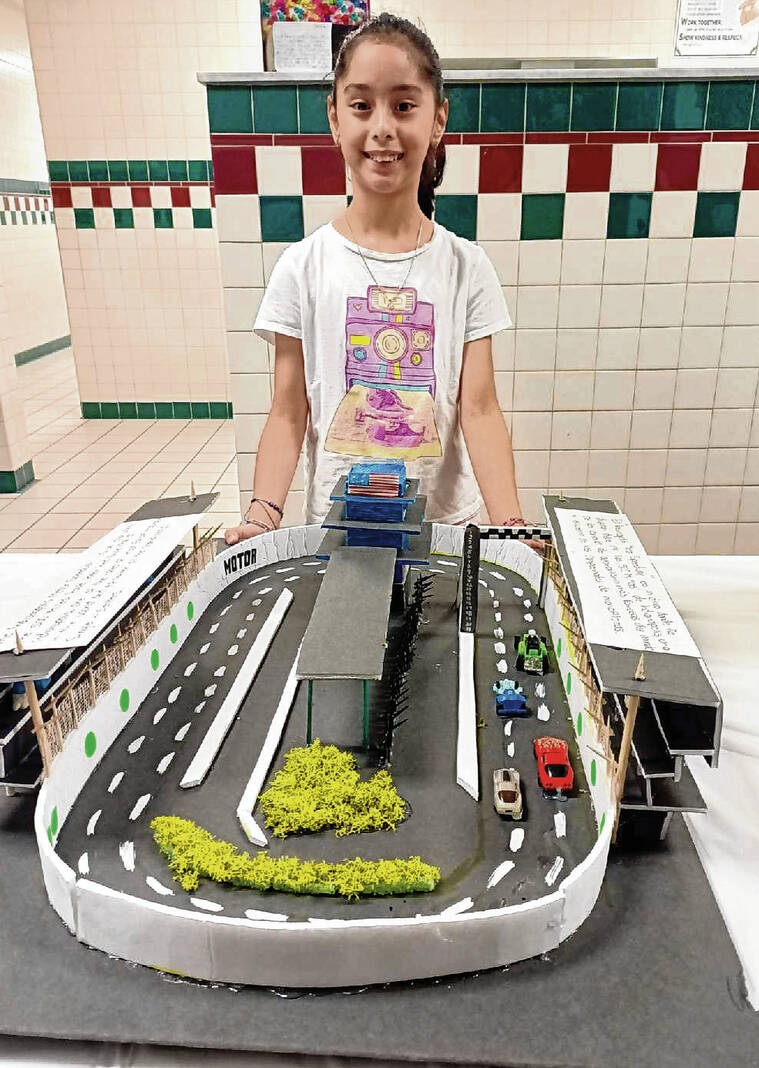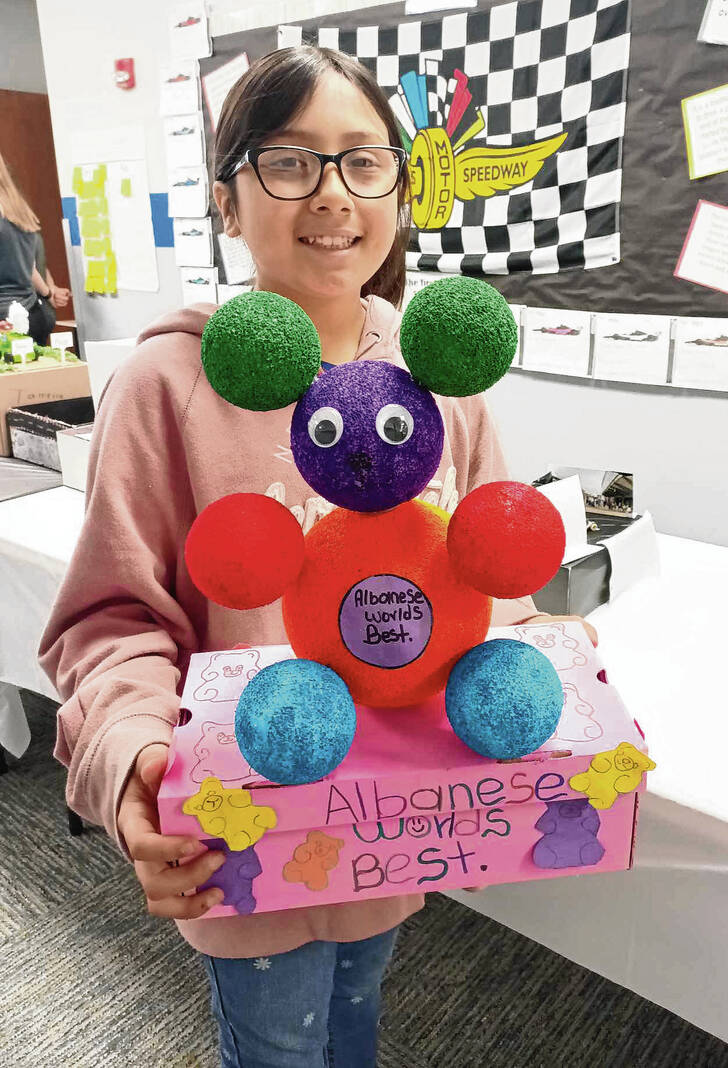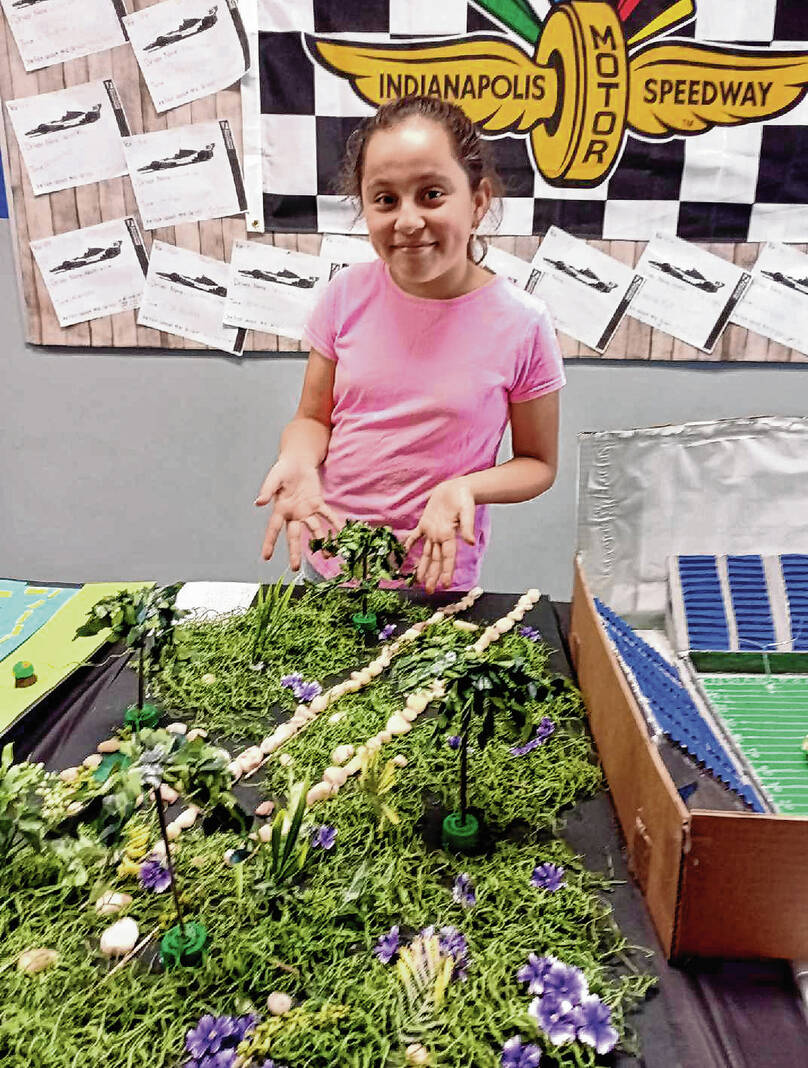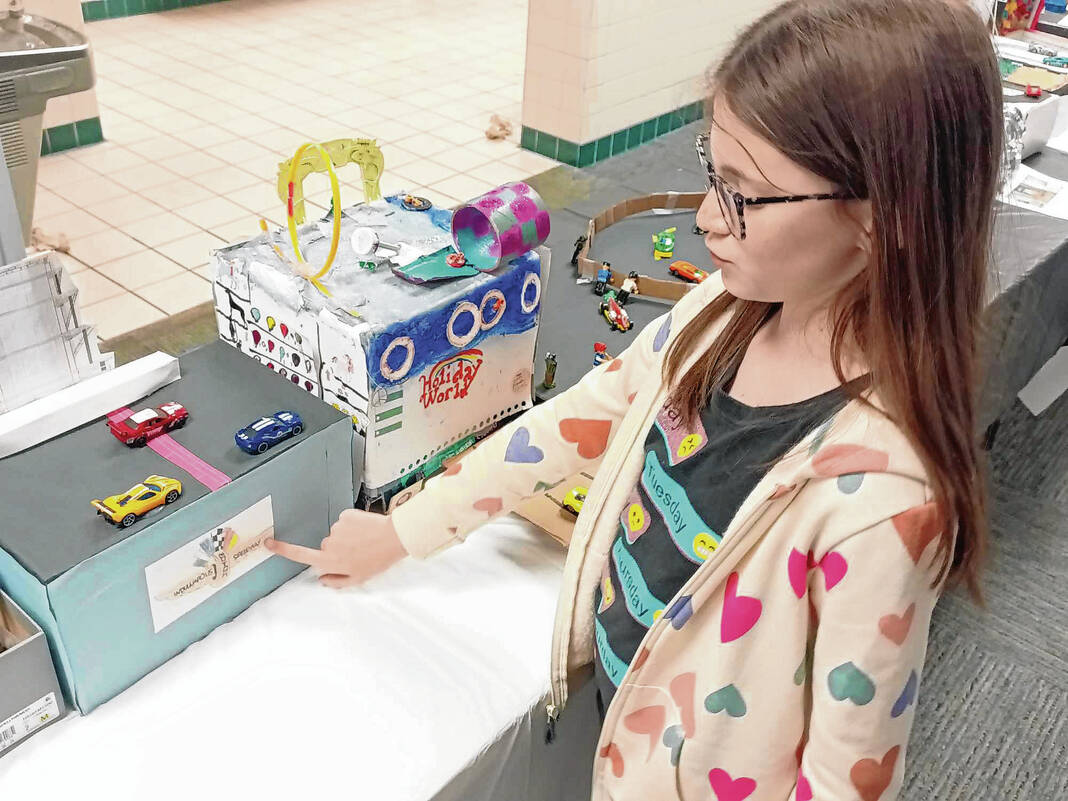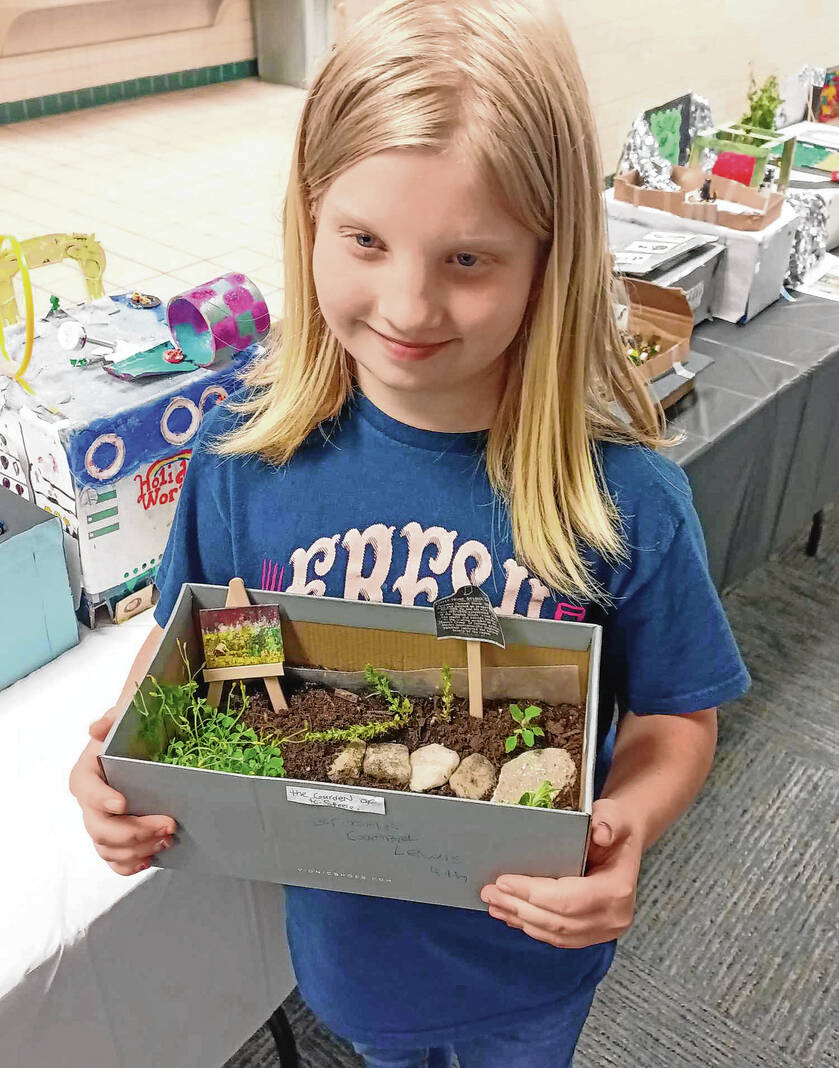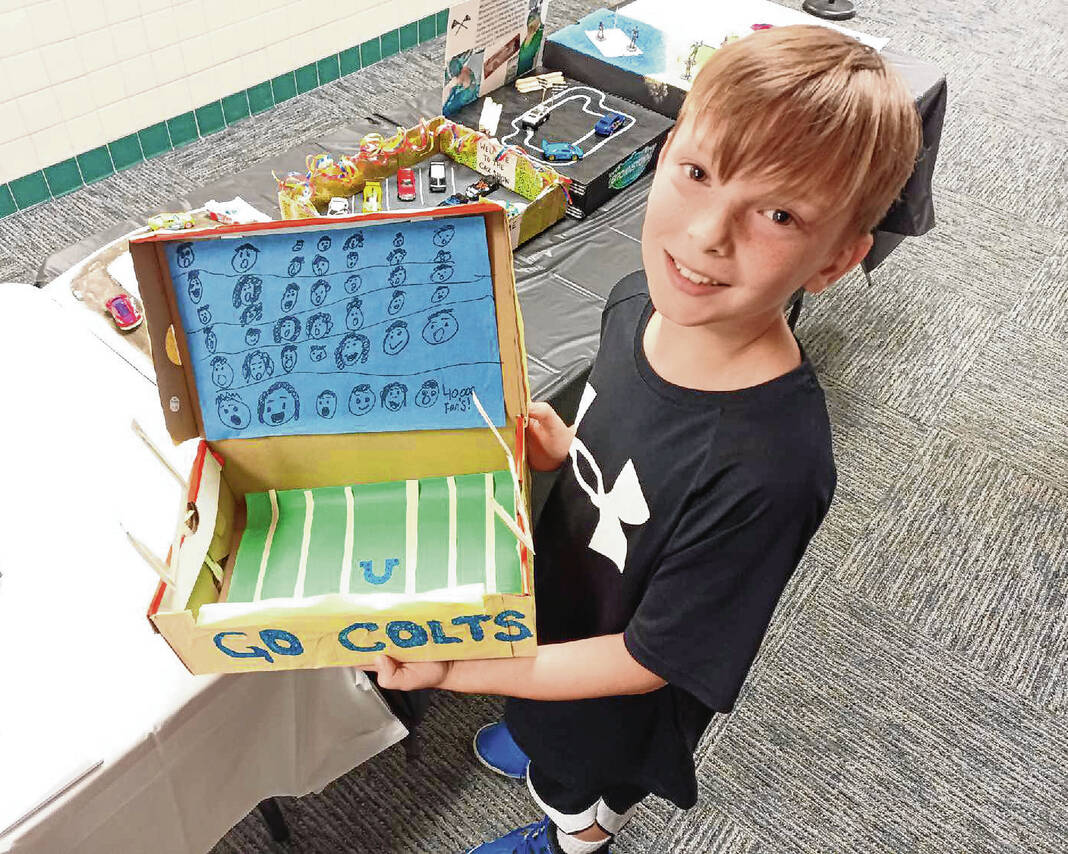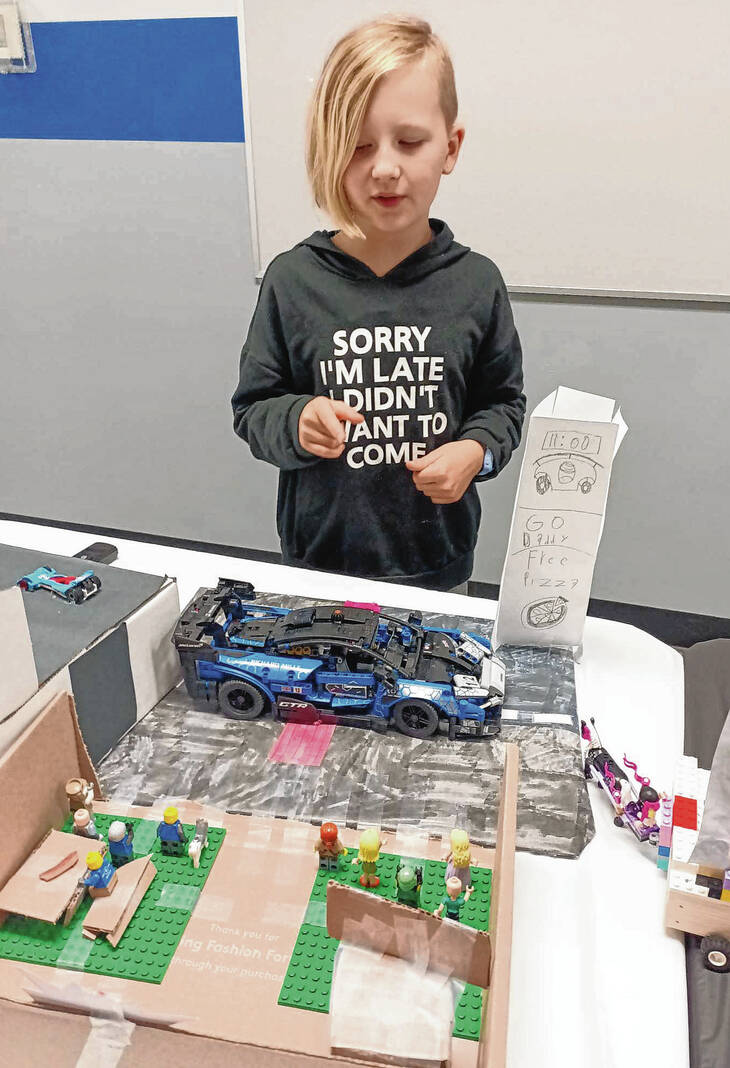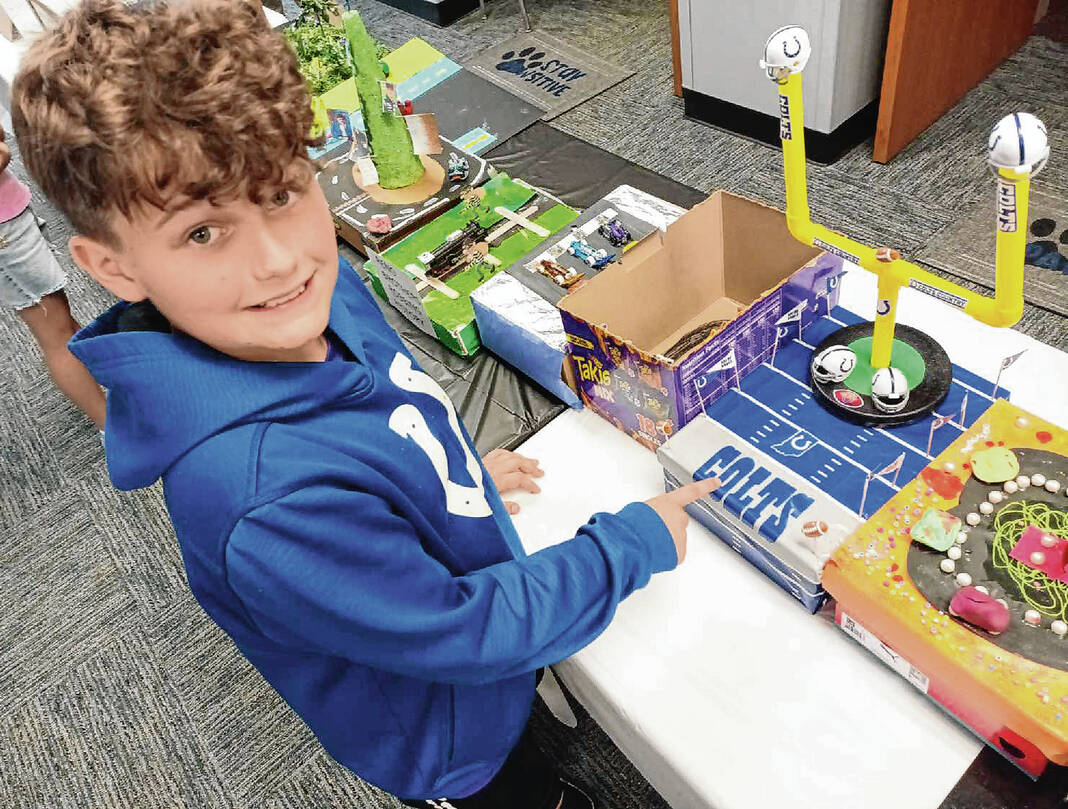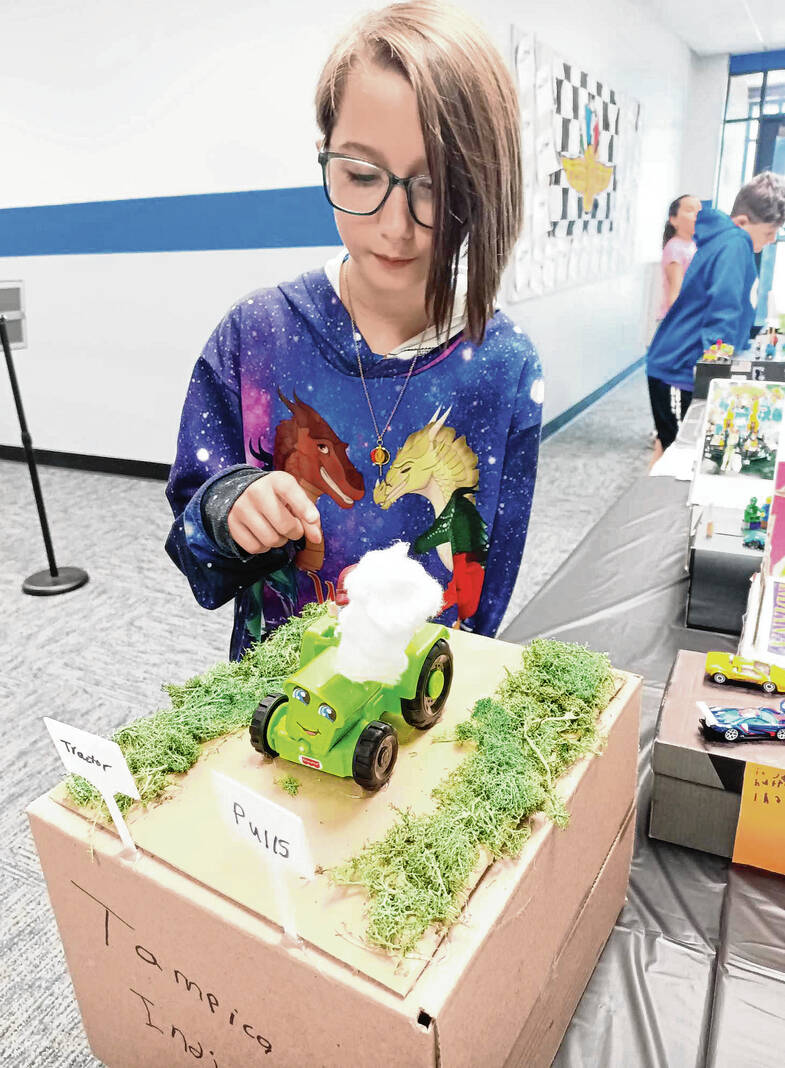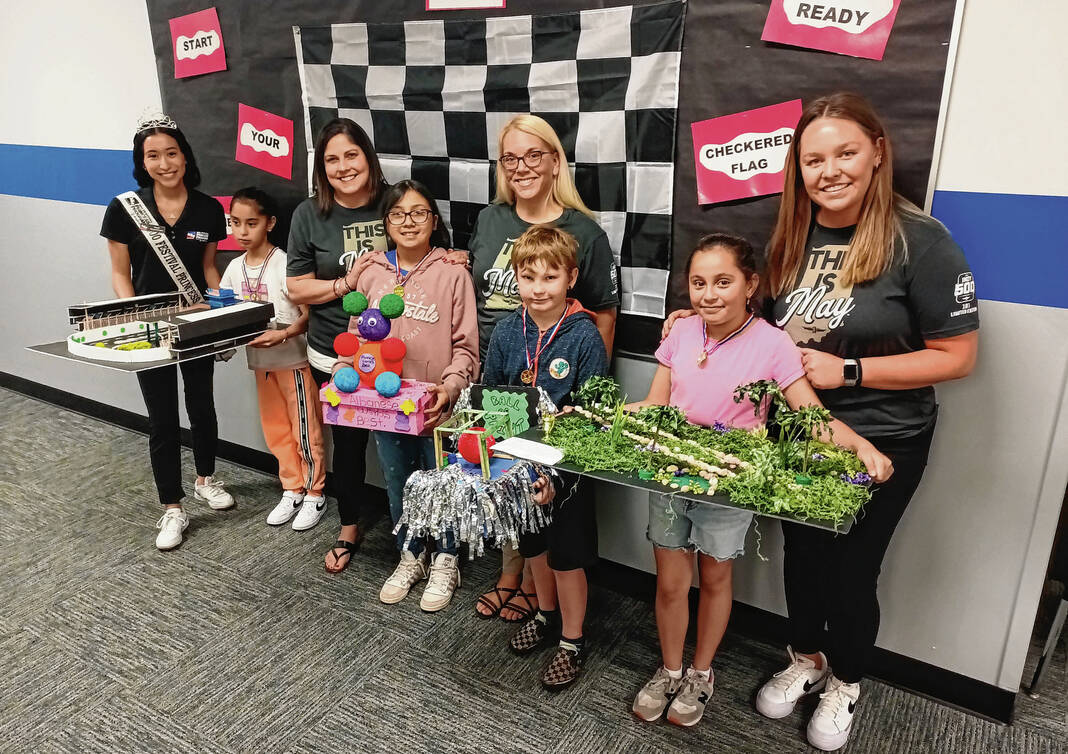For the third year in a row, Seymour-Jackson Elementary School fourth-graders are participating in the 500 Festival and Indianapolis 500 Education Program.
This year, however, there was one big difference.
To kick off the unit, the students and their teachers, Heather Lewis, Emily Pardieck and Kristen Rawlings, visited Indianapolis Motor Speedway.
That helped a lot as they returned to the school to continue with the program, which is presented by Indiana University Health and provides teachers with engaging lesson plans and classroom materials that allow students to explore the significant role of the 500 Festival and the Indianapolis 500 in Indiana’s state history and culture.
The free program takes place in the spring and is open to all Indiana fourth grade classrooms. Indiana history is part of the fourth grade curriculum.
Registered classrooms receive student materials, lesson plans, an educational video series, supporting materials and opportunities for students to participate in an essay contest and classroom decorating contest. They also can take a study trip to the speedway or have a mobile study trip at school.
Growing up on the north side of the state capital, Pardieck has been to the Indianapolis 500, and when she later became a teacher, she incorporated the education program in her classroom.
She wanted to bring the program to Jackson and take a trip to the speedway in 2020, but the COVID-19 pandemic prevented that from happening.
This year, they were able to make it work, and the three classes broke into groups and had different experiences, including walking through Gasoline Alley, seeing the Yard of Bricks, waving race flags, visiting the Pagoda and seeing IndyCars up close.
Most of the kids had never been there before.
“I had some kids who didn’t realize you were in the infield. When we were leaving, they were like, ‘Oh, we were in the track?’” Rawlings said.
This also was Rawlings’ first time at the speedway.
“It was interesting. They were asking me questions and I had no idea because I had never been there, either, so it was nice because I was experiencing it with them,” she said. “I had never even thought about going, and it was just cool because I was learning along with them.”
Once the students were back in class, they were able to point out things they remembered seeing on the trip.
“When we watch videos or do worksheets, they are like, ‘Oh, we went there’ or ‘I remember seeing that,’” Rawlings said.
“They had no background knowledge or anything before we went there. We got to sit in the grandstands and eat lunch, so it was like now, we were watching that in our videos and they were like, ‘We know where that is,’” Pardieck said.
The program’s curriculum is based on Indiana Academic Standards for language arts, health, math, science, social studies, visual arts and physical education. Students learn about parts of a race car, see a timeline of winners since the first race in 1911, research speed and time, learn about traditions and superstitions, see what countries drivers are from and more.
“They give you every subject — reading, science, social studies, math,” Lewis said. “I know we have weather coming up, so like the weather data from past races. I always like that one.”
Another fun part of the unit is the teachers had students make miniature 500 Festival Parade floats. They could be anything related to Indiana, and they had to include a paragraph about their choice. The floats recently were on display in a hallway at the school for others to see.
Since they visited the speedway this year, several students used that for their float.
Kaydence Wilson drew her own Pagoda with the help of her dad and put a few toy cars on a race track.
“My dad really likes cars, and I grew up with race cars, so I really like them,” she said. “I liked building the Pagoda and doing the race track.”
Elin Dick found a race car made of Legos she and her brother made in the past and thought it would be perfect to use for her float. She also drew the scoring pylon and used Lego people for spectators, including some visiting a hot dog stand.
“If you lined up all of the hot dogs that were bought every year, then you would have enough to go around the track three times,” Dick said of a fun fact she learned.
Earlier this school year, fourth-graders visited the T.C. Steele State Historic Site in Nashville, and Brooklyn Gambrel liked it so much she decided to use that for her float.
She got dirt, plants and rocks from home, printed off an image of the historical marker and made her own sign and included one of Steele’s paintings on an easel.
“I really like gardens, and I really enjoy to garden,” she said. “I went around my backyard and looked for plants.”
Sports is a popular theme each year.
Gunnar Williams and Kigan Pelley both went with the Indianapolis Colts, and Bryston Walls chose the Indiana Pacers.
Williams made a replica of Lucas Oil Stadium complete with the windows on each end, the roof on the lid of his shoebox, fans in the stands and the field with goal posts.
“The Colts are one of my favorite teams, and when it was based off of Indiana, I thought of the Colts,” he said. “I liked being creative with it and making it like it’s the real Lucas Oil Stadium.”
Pelley bought several supplies from Party City for his float, including goal posts and miniature Colts helmets and flags.
“I watch the Colts, and it’s a team I really like a lot,” he said. “I thought it was fun we got to do a project we wanted to do.”
Walls included a basketball card of former Pacers player T.J. Warren that his brother had and put it on the court, which featured basketball goals on each end and the Pacers logo in the middle. He also included fans in the stands and a scoreboard.
“At first, it didn’t look that good. I was just going to trash it and move to a different one. Then my dad did the pencils for the goals, and it turned out pretty good,” he said.
Emma Mikels was among those inspired by something local for her float, as she chose the tractor pulls that are conducted each June in Tampico. Why?
“We live right next to it,” she said. “I think they are just really cool to watch and see what they pull.”
Her box included a man on a toy tractor with smoke billowing out of it.
“I hot glued a Q-tip to it and put cotton balls around it for the steam,” Mikels said, adding she used reindeer moss for the grass on both sides of the track. “It was just really fun to do.”
Hannah Romero De Gante of Seymour, one of this year’s 500 Festival princesses, visited the school to help pick the top three floats. She was impressed with all of them and wound up awarding first place to Isabela Lopez, second place to Lane Higdon and a tie for third between Danna Hernandez and Zoey Hernandez.
Zoey said she and her brother like Albanese gummy bears, so she made a large gummy bear out of Styrofoam balls that she painted different colors.
“At first, I thought it was going to be like, ‘Oh, it’s not going to work out,’ and then it looks cool,” she said, smiling.
Lopez’s float was inspired by Clark State Forest in Henryville. She used bottle caps for the base of trees and included rocks, flowers and grass.
“I chose it because I like nature, and I feel like a lot of people like nature,” she said.
It took her a day to complete, and she liked how it turned out.
“It took hours,” she said, smiling. “I think I did pretty good.”
The 107th running of the Indianapolis 500 is Sunday.


